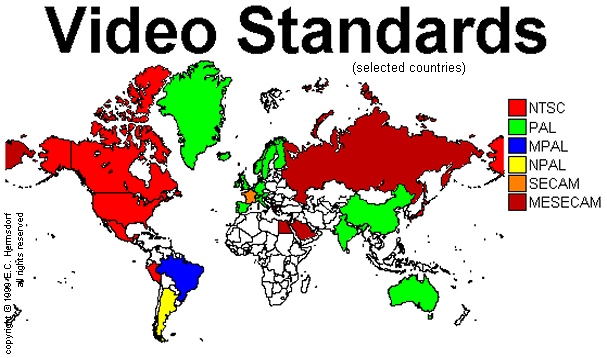TC03 - Video editing
Video editing
 Learning objectives
Learning objectives
When you have completed this session, you should be able to
- create a small video and edit it,
- list the common standards.
Digital Video Technology
Analogue and digital video technology is based on television broadcasting. Therefore it is good to know some of the basic principles of television.
TV picture is made from a series of still pictures. The pictures are transmitted to the receivers when divided into lines. These lines are displayed by electron rays onto the phosphorous coating of the tube surface. In order to achieve a picture free of b link ing, and for increasing the frequency of the screen interlaced scanning is used. Electron rays first display the odd lines then returns to the top of the screen and the even lines are displayed between the odd ones.
This method is known as interlaced scanning.
A half TV screen image is called field while a full TV picture is called frame.
For color image transmitting the three basic colors (RGB: red, green, blue) must be transmitted beside the brightness value (Y). When knowing the brightness value and two other basic colors the third one can also be determined. Therefore in practice the Y value and the R-Y and B-Y difference is transmitted. This method is called YUV coding.
There are three color TV standards are used in the world. The most important specifications are the followings:

NTSC (National Television System Committee)
The oldest norm used in the United States and Japan.
The number of lines forming the picture is 525
Refreshing frequency 59,95 Hz
Half refreshing frequency 29,975 Hz
Line frequency 15734,2657 Hz
Number of visible lines 475
(Only 475 lines can be seen because during half picture refreshing (25 line time) no video signal can be displayed.)
PAL (Phase Alternating Line)
It was created by modifying NTSC norm in order to eliminate the sensitivity of the successor for transmission phase torsion.
The number of lines forming the picture 625
Refreshing frequency 50 Hz
Half refreshing frequency 25 Hz
Line frequency 15625 Hz
Number of visible lines 575
SECAM (Séquentiel Couleur á Memoire)
Norm introduced in France. The effect of phase torsion is decreased when switching from line to line only one color difference signal is transmitted.
In other parameters it is the same as PAL norm.